Traditional Jordanian food is built to share, making mealtimes a wonderfully social experience, full of flavour and stories for starlight. Join us on a safari through the highlights of Jordanian cuisine, with easy Jordanian food recipes to try at home.
Also, see our guide to planning your perfect Jordan itinerary here.
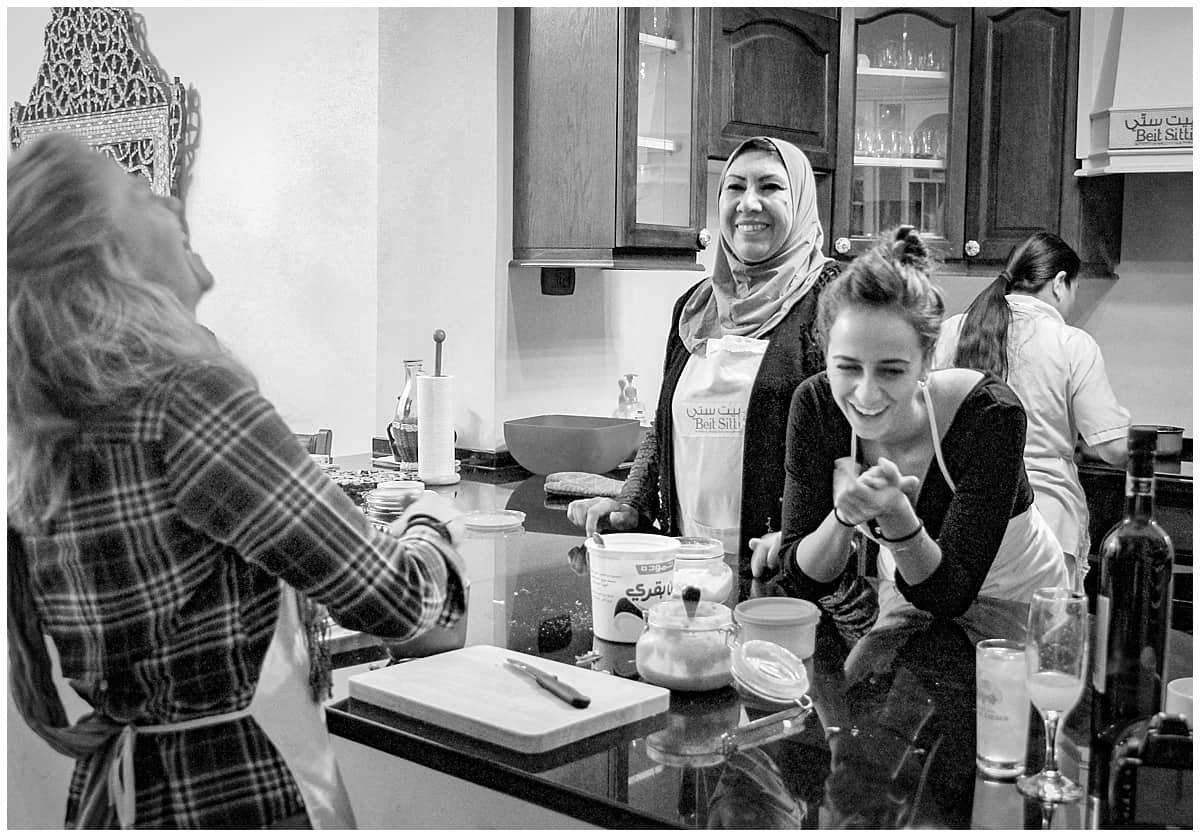
Disclosure: if you book or buy through any of the links on this page, we may earn a small commission at no extra cost to you. Cheers for that!
Traditional Jordanian Food
Jordanian food relies heavily on fresh ingredients, often finely chopped. It throws in a hefty dose of subtle spices I’ve since struggled to find at home: sumac, tahini and bakleh. Most meat dishes come with salads that burst with their own flavour, rather than using separate salad dressing as a crutch, and meals usually take the guise of a self-service kind of affair.
Reunited at Beit Sitti after three years
Jordanian Cooking Lessons
Nestled in one of Amman’s oldest neighbourhoods, Jabal al Weideh, in the oldest city in the world, is the beautiful cooking school Beit Sitti.
You couldn’t ask for a better sense of atmosphere…Hidden at the top of a barely-lit staircase, the smoky orange lights of the city glimmered both in the distance and up close as we arrived. The walls inside were fresh and white, punctuated only by a mirror with borders that glittered like jewels dipped in chocolate.
We weren’t in a school, we were in a Jordanian home. Not that we had long to appreciate it.
Maria, the English-speaking of our two chefs, moves at about twice my speed and speaks at about thrice my volume despite being half my size.
She confiscates my camera, my pen and my notebook and I’m set to work. Hands washed, sleeves rolled, apron tied, knife at the ready.
Chopping Skills
She eases me in gently, by giving me an onion to chop. I relax a little. 1950s housewife I may not be, but even I can chop an onion.
“You might find it works better,” she says ten seconds later, “if you do it like this.”
She pinches one side of the halved onion and slices it swiftly until it resembles a closed accordion. She then holds that tight, turns the knife on its side and cuts parallel to the table, aiming for her palm. After enough shifts spent stitching together fingers in my former life, I can’t help but flinch at the sight.
“Here,” she sets down a glass of cloudy liquid. “Have some arak. It’s like Arabic ouzo.”
Never has a description enticed me less.
Jordanian Food After Arak
Aniseed fires along my throat and we move on to chopping parsley. Later, outside in the balmy night air, I fry pitta bread and potatoes with Ali, our driver, a timely reminder that preparing food crosses all language barriers.
Back inside, I peel smoked aubergines under the supervision of our haja.
“Haja is a term of respect for older people,” Maria explains. “People who have completed the Haj, the pilgrimage to Mecca. Haj for men, Haja for women.”
Our haja smiles, adjusts the knife so that I chop ingredients into even smaller pieces, and Maria continues talking.
“I am a ‘trained chef’ in that I take professional cooking classes – although most of that is about French food, but really our Haja know more about cooking than me. Cooking classes of any kind are a strange idea for that generation because the women here learned it all as they were growing up, they learned everything they needed to know about food and cooking that way, at home, as part of normal life.”
So, are the meals we’re preparing (recipes below) fresh from fancy chef school or do everyday Jordanians make these meals at home?
“It’s a mixture,” says Maria, and our driver nods to agree.
“The mouttabal, fattoush and siniyet kafta people regularly make at home,” she says. “Whereas knafeh people tend to buy from bakeries for graduations… Or weddings…For special occasions.”
My hands fluff knafeh dough and ghee with squidgy satisfaction.
“We want to show people that they can make knafeh themselves – easily – at home.”
Easily, eh?
Characteristics of Jordanian Food
I wash my hands and head out to the barbecue where aubergine fizzes and spits on the naked flames.
Jordanian food relies heavily on fresh ingredients, often finely chopped. It throws in a hefty dose of subtle spices I’ve since struggled to find at home: sumac, tahini and bakleh. Most meat dishes come with salads that burst with their own flavour, rather than using separate salad dressing as a crutch, and meals usually take the guise of a self-service kind of affair.
Broad ceramic dishes glazed in royal blue are set down on the table, from which everyone helps themselves.
It’s tasty and healthy, well, except for the knafeh that oozes with that kind of sweet, delicious moisture that you know can’t come from polyunsaturated lipids.
It’s also surprisingly easy to make. Although I rather wish I hadn’t told you that, in case I ever invite you over for dinner.
You should always remember, though, it’s good manners to look impressed.
The Real Story of Jordanian Food
Ten years have passed since I first travelled to Jordan and started writing about Jordanian food. On my first trip, I met Maria, a bright young woman who had just started her business. I had just started Inside the Travel Lab.
Ten years later, we met again (and once in between that, if we’re being technical!)
After two years of lockdowns and both of us wondering whether our businesses and livelihoods would survive, both of us juggling small children and both of us wondering whether this would ever end… we both survived.
Our reunion back on the terrace of Beit Sitti was as poignant and heartfelt as any could be after the pandemic that ravaged us all.
And it highlighted to me, again, the importance of travel. To connect and to remember that we are all people, like you, like me, just trying to make our hearts sing and take care of our friends and families. And sometimes, just trying to make it through to the end of the day.
And here’s a blurry, late at night selfie to celebrate that!
Abi and Maria in Beit Sitti. Reunited after 10 years and one pandemic!
The Best Traditional Jordanian Food Dishes
You’ll find great similarities between Middle Eastern food and it’s often hard to pin down which flavour belongs to which country. But does it matter? Here are some of the best things to eat in Jordan.
Mansaf
Lamb mansaf arrives as a great celebratory platter of aromatic rice, lamb, toasted nuts and paper-thin bread. It is a meal designed to share, with friends and with jameed, a tangy yoghurt sauce.
It’s a traditional Jordanian dish (often described as the national dish of Jordan) with deep roots to the Bedouin and nomadic people of the Levant. Like much of Jordanian cuisine, you’ll find similar versions from Israel to Iraq, with small differences along the way.
But there’s no doubt that you’ll find this Jordanian rice dish everywhere.
- Inside Tip: taste lamb mansaf as part of a homestay meal in Wadi Musa.
Falafel
Ah, the beloved chick pea, smushed into a ball and fried. If you’re feeling fancy, you can squish it into a pitta bread. Yet don’t be put off by stodgy versions at home. Fresh falafel, spiced up with chopped mint and raw onion, is one of the best street foods you can find in Jordanian cuisine.
Traditional Bedouin coffee pots outside the Monastery at Petra
Bedouin Coffee
Another tradition that blends across the Middle East is the idea of Arabic Coffee. Roast over an open fire and served infused with cardamom, you drink it in smaller ceramic glasses. At a first tip, it tastes “thin” but the buzz is strong! It’s polite for the host to take the first taste from a pot and for you to decline after three cupfuls. You decline by shaking your cup in the air.
It’s similar to Turkish coffee but the added cardamom gives it an unmistakeable taste and aroma. Whenever I smell it, I feel so happy to be back in the Middle East.
Recommended: why Bedouin coffee is about more than just the drink
Knafeh or Kunafa
Everywhere has them, I suppose. The naughty but nice hot streetside foods that define a city, to my tastebuds at least.In London, it’s roast chestnuts, steam smoking into the winter sky while amber embers blaze. In New York, it’s bagels, my first plaited bread sticks studded with cubic salt. Singapore surprised with the ice cream sandwich and in one of the oldest cities in the world, it was knafeh.
Knafeh, like the stone and sand of downtown Amman itself, has a deliciously rich history (and flavour, but we’ll come to that in a minute.)
It’s claimed across the Levant (a term that broadly incorporates modern day Jordan, Israel, Syria and the Lebanon) and it’s often bright orange.
These guys serve the best knafeh in Amman
It’s also delirious with calories as a butter-soaked slab of cheese rolled or pressed between syrup-soaked angel hair and sprinkled with rosewater and chopped pistachios.
Piping hot, it’s butteringly eye-wateringly delicious, (though the taste decays as it cools.)
Still, that doesn’t matter. It’s a snack to be shared on the run in the nooks and alleyways of the city as workmen and city men, veiled women and those with bouncing curls congregate for fleeting moments in the oldest city in the world (more or less.)
See, that’s what I love so much about knafeh, roast chestnuts, bagels and even currywurst.
They’re all flavours of great old cities that are still very much alive.
- Inside tip: try the knafeh from Habibah sweets in the Old Town in Amman
Baba Ghanoush
A staple of a gorgeous mezze sharing platter, baba ghanoush not only has a bouncy, fun sounding name but it tastes good too. Aubergines (eggplants) are smoked on open flames, peeled and mashed to make this dip. Sometimes, chopped tomatoes or onions are added. It’s often served in a small bowl with hummus and pitta (pita) bread.
It’s also frequently confused with…
Mouttabel
Mouttabel takes the start of baba ghanoush and adds in some tahini (a paste of sesame seeds, easily found in the UK these days.) You’ll sometimes find it mixed with yoghurt as well, along with a drizzle of olive oil and a splash of lemon juice. It’s one of my absolute favourite Jordanian dishes and one of the best dishes to share with others.
Hummus
Well, we could hardly talk about middle eastern food without mentioning hummus, now could we? How can some countries take the humble chick pea and make it into something fabulous – when every time I try to do the same, it just tastes like floury glue? The secret? Fresh olive oil. And avoiding tinned chick peas.
Fattet Hummus
And you thought there was nothing more to say about hummus? Enter fattet hummus, a blend of chickpea puree made with tahini, pita bread fragments and pine nuts. Hungry just at the thought of it.
Maqluba: Upside Down Chicken and Rice
Maqluba means “upside down” in Arabic and in the hands of an experienced chef, this dish is a delight!
In the hands of, well, someone like me, it will still taste as good but probably lose something in the presentation, but you’ll still understand why it’s such a popular Jordanian dish.
Meat, rice, turmeric, cinnamon and garlic are cooked together in a pot. At serving time, the pot is flipped over to create an impressive tower on a plate.
It’s an impressive way to serve Jordanian chicken and leaves you with a warm, satisfied stomach.
Zaarb: A Bedouin Barbecue
The succulent mix of ground meat and vegetables in a Zaarb stew or platter is razzle me dazzled only more by the way it is cooked: underground.
Nomadic Bedouin people had no room for kitchens. Instead, they dug holes into the desert ground and used that as an oven instead. Zaarb takes several hours to prepare (and probably doesn’t work as well in British soil) but you can find workarounds in a conventional oven too. And you don’t need to remember to mark the floor to find it again!
When it comes to food from Jordan, this recipe really talks about food in Jordan, deep inside the earth.
Jordanian Food Recipes: How to Make Jordanian Food
Click on the links below to access authentic Jordanian food recipes that you can recreate at home:
- Fattoush at Beit Sitti
- Siniyet Kafta at Beit Sitti
- Moutabbal at Beit Sitti
- Knafeh at Beit Sitti
- Falafel at Feynan Ecolodge
Other Popular Foods in Jordan
So, now that we’ve caught up with the top ten traditional Jordanian dishes, what else might you find when you travel through this part of the Middle East?
Well, olives, for sure, in all their juicy and marinaded glory. You may also find ful medames, a warm stew with fava beans flavoured with cumin, parsley, lemon juice and garlic, and more typically found in Egypt.
Keep an eye out for morsels wrapped in vine leaves or grape leaves, a dish that counts as Jordanian cuisine but which you’ll also find as one of the best things to eat in Greece.
Hospitality is a core part of Bedouin culture – bon app!
Jordanian Bread
Jordanian bread is an absolute delight if you enjoy flattened breads that you can dip in mezze. Pita bread is the most common bread that you’ll find, made from wheat flour with a pocket inside for falafel or other fillings.
Shrak or markook is very thin and a typical Bedouin dish. It’s ever so slightly leavened and thrown onto a hot saj, which looks like an upturned wok, in order to cook.
Ka’ak bread comes with sesames and looks like a giant loop earring, while taboon or laffa is baked in an oven and looks like a slightly sturdier version of a pita.
Za’atar spice mix on flatbread is a treat
Za’atar
Za’atar is a spice mix made from oregano, thyme, marjoram and toasted cumin and coriander and is a cornerstone of Middle Eastern cuisine. It’s best enjoyed served as a kind of Jordanian pizza: on flatbread and shared between friends.
Jordanian breakfast: make your own foul mudummas mix
Breakfast in Jordan
A traditional Jordanian breakfast involves flat breads like pitta, falafel, hummus, olive oil and lebneh, a thick yoghurt-like creamy paste. To drink, you can expect mint tea or Arabic coffee and, well, lots of honey-sweet baklava pastries.
But the highlight, the thing I miss the most is…
Foul Mudummas
Don’t be put off by the name! Foul mudummas is a blend of warm fava beans, cooked into a kind of soup. On its own, it’s fairly bland but comforting but you have the chance to tweak the taste to your liking by mixing in chopped onion, fresh herbs, tahini paste and more. Heaven.
Foul Mudummas
Breakfast in Jordan also comes with halawa, a sweet slab of sesame paste with nuts. It’s slightly crumbly and not too sweet and I miss it at breakfast so much!
A selection of honey soaked Jordanian sweets
Jordanian Sweets
When it comes to Jordanian sweets and Jordanian desserts, you’d better like things sweet! Look out for honey-soaked baklava treats, as well as the juicily sweet knafeh which made it into the top ten traditional dishes in Jordan.
As with other places on the Arabian peninsula, you’ll find lequimat, small round dumplings served hot and with syrup.
Like the main dishes, most Jordanian desserts are designed to be eaten with your hands and served in small pieces as a result.
Make sure you don’t miss a fresh mint drink in Jordan
Jordanian Drinks
When it comes to Jordanian drinks, you’ll find that coffee features on an almost daily basis.
And while alcohol is not forbidden, in fact Jordanian wine is delicious, Jordan is still a mainly muslim country and so drinking alcohol is not widespread.
Instead, you’ll find plenty of fresh juice based drinks, bursting with lemon and mint and making you feel healthier just by looking at them.
Recommended Places to Eat in Jordan
Truthfully, it’s hard to find a bad meal in Jordan, as long as you’re sufficiently wary around the tourist haunts. Hospitality is considered a top priority here and that’s intimately entwined with food.
However, if you’re looking for specific recommendations, then here are mine:
- Beit Sitti is a cooking school rather than a restaurant but I can’t recommend it highly enough as a way to eat, learn and have fun and make friends. I enjoyed it so much, I went back twice.
- Feynan Ecolodge serves the freshest bread, made before your eyes. It’s not that easy to get to, given it lives in the Dana Nature Reserve, but it’s great for Arabic coffee, Bedouin cuisine and stargazing.
- Wild Jordan is a complex that overlooks the citadel in Amman and which combines a workspace, shop and restaurant in an endeavour to preserve the Jordanian landscape.
- Bait Khairat Souf – this beautiful enclosed garden provides food from a women’s cooperative supported by the Queen Al Noor foundation.*
- The Iraq Al Amir Handicrafts village in Wadi El Sir serves fresh, traditional homemade cuisine in a leafy stone courtyard surrounded by olive trees. It’s another women’s cooperative designed to give local women more options.*
- A home dinner in Wadi Musa. This experience was a highlight of my recent trip to Jordan, as Ameena invited us to share dinner with her children and brother in law, Sohaeb. They shared stories of the shift from nomadic to settled Bedouin life and also shared the best mansaf of the trip.
* These experiences and women’s cooperatives are tricky to find as an independent traveller. I discovered them thanks to the input from the wonderful Globus Jordan Escape team. They run group tours through Jordan and you can read more about my experience of their Jordan itinerary here.
Rumi: a gorgeous coffee shop in the creative district in Amman
Recommended Coffee Shops in Jordan
Coffee is a big deal in Jordan. Bedouin coffee rituals continue in the desert and in people’s homes. But the hipster, leafy coffee shop vibe is popular as well. Here are some Jordanian coffee shops to enjoy:
- Rumi – this gorgeous hipster coffee shop is popular with young people in the artsy Jabal Al Luweibdeh district in Amman.
- The National Gallery of Fine Arts has a tiny but colourful coffee shop area with a small balcony that gives a great view of life in the city.
- Wild Jordan gives a great view of the citadel and supports environmental projects across the country.
More About Travel in Jordan
Start with this guide to the 21 Best Things to do in Jordan to sketch out your initial ideas, from the capital city of Amman to the famous Wadi Rum. Then browse through some of the articles we have on travel in Jordan:
- Petra at Night: is it worth it?
- The Raspberry Ripple City in the Desert: a different look at Petra
- What makes the Madaba mosaics matter in today’s world?
- What happens to your body when you swim in the Dead Sea?
- How to plan the perfect Jordan itinerary
- When is the best time to visit Jordan?
- The rules and rituals around Arabic coffee in Jordan
- Is Jordan safe for solo female travellers?
- Don’t forget you can download these easy Jordanian food recipes right here and enjoy Jordanian cooking and cuisine at home. Enjoy!
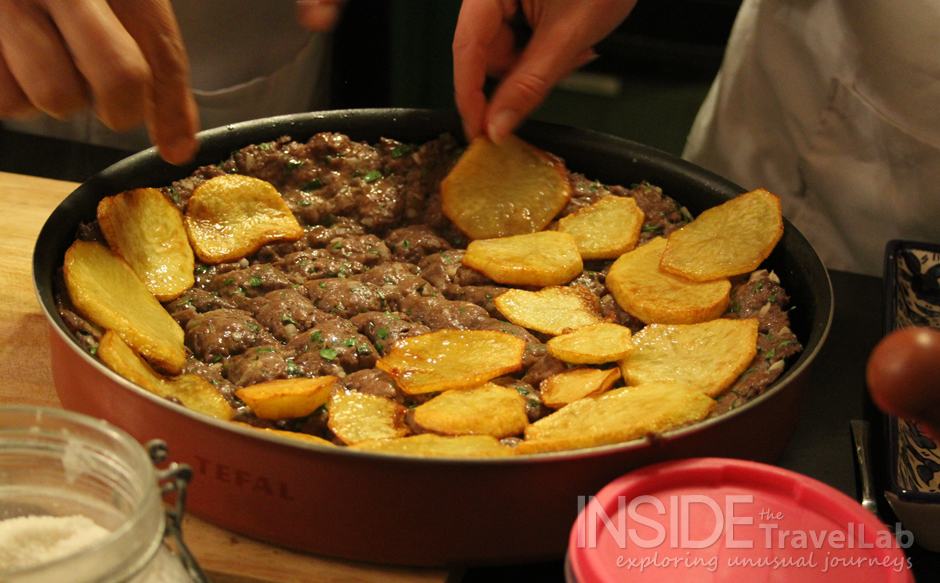
Disclosure: I learned these Jordanian Food recipes at Beit Sitti thanks to the Jordan Tourism Board. Some experiences took place as part of a campaign with Globus Travel. All views and mediocre cooking skills remain mine, all mine, as ever, as always.



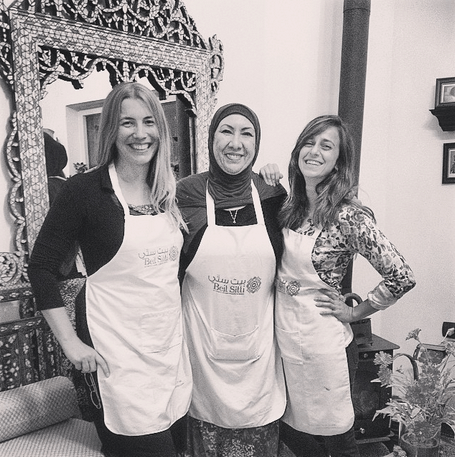
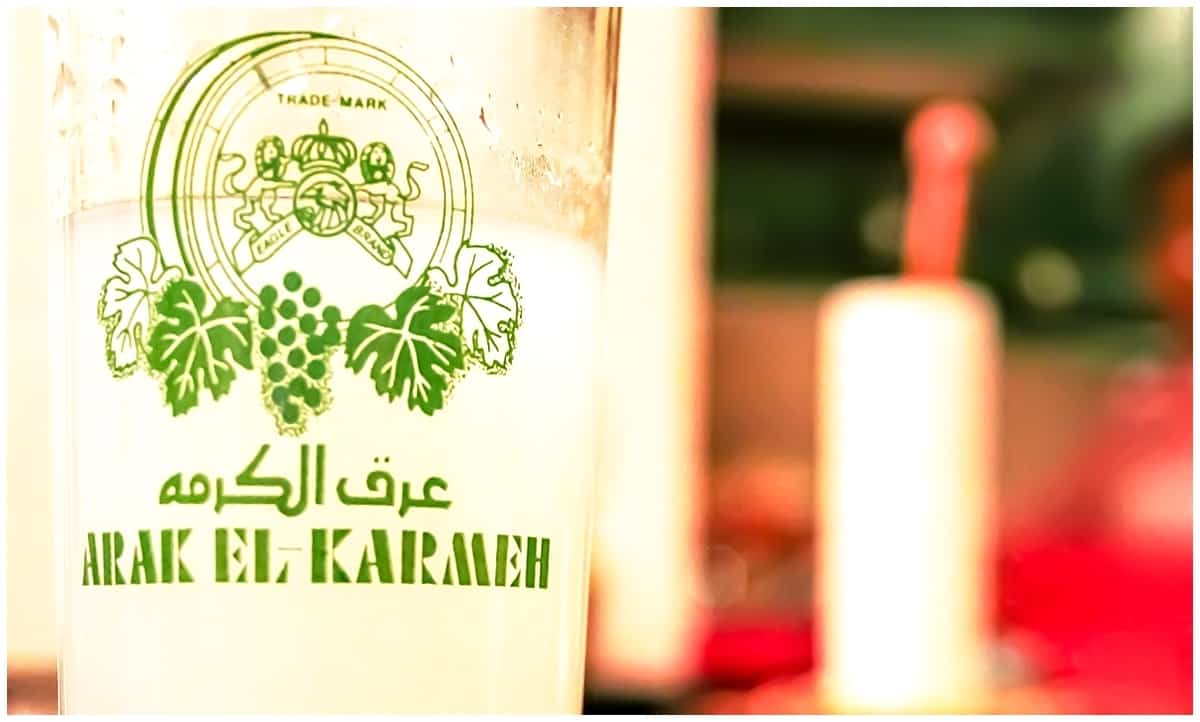
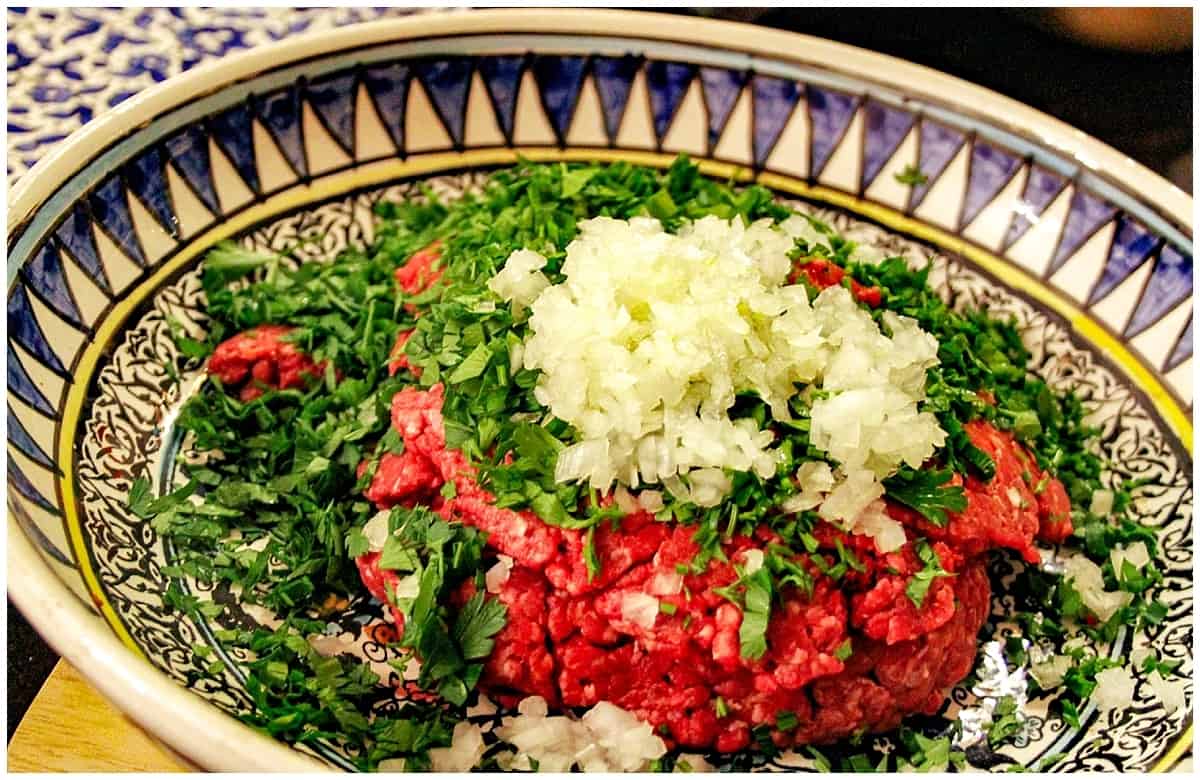
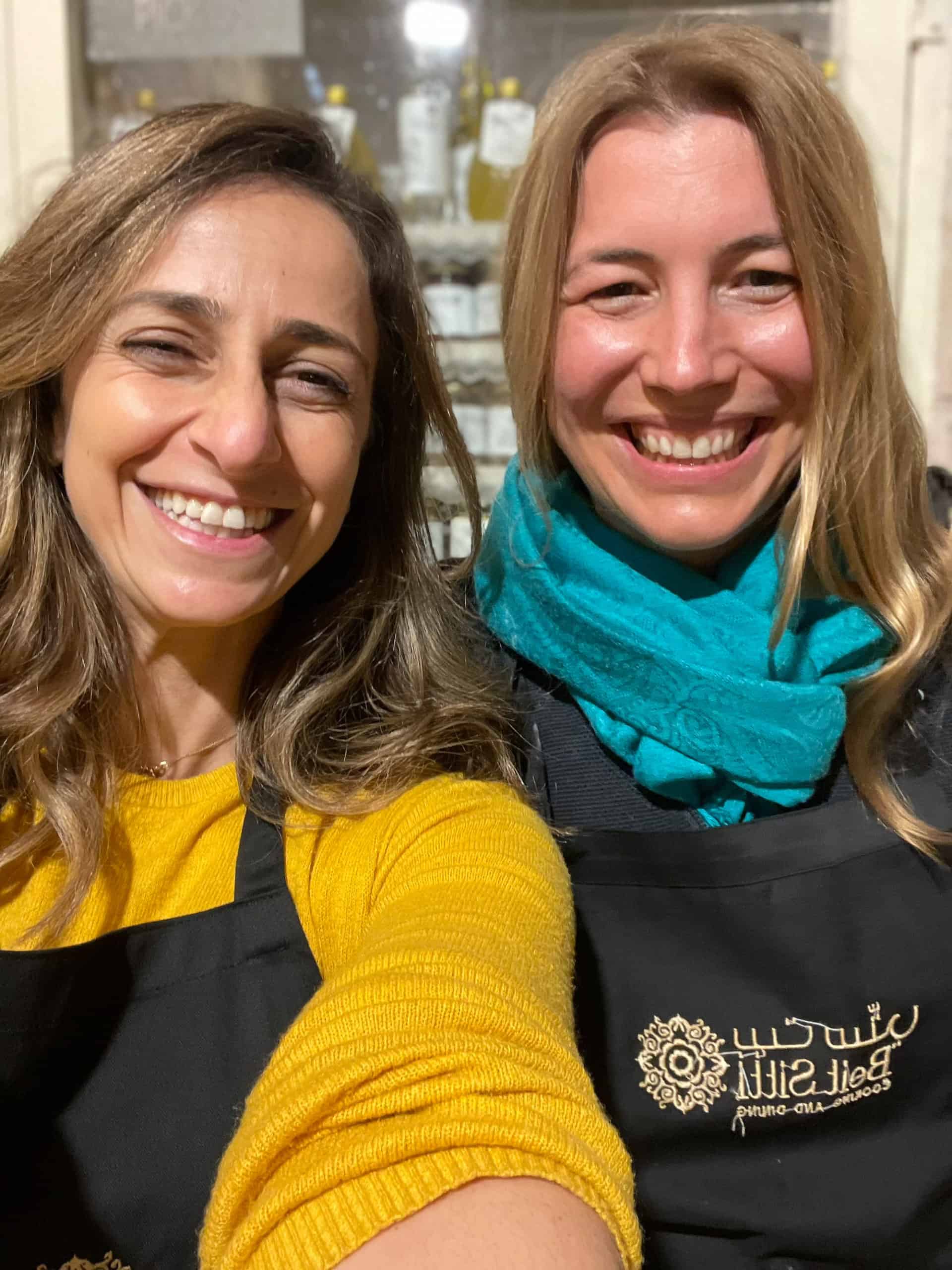
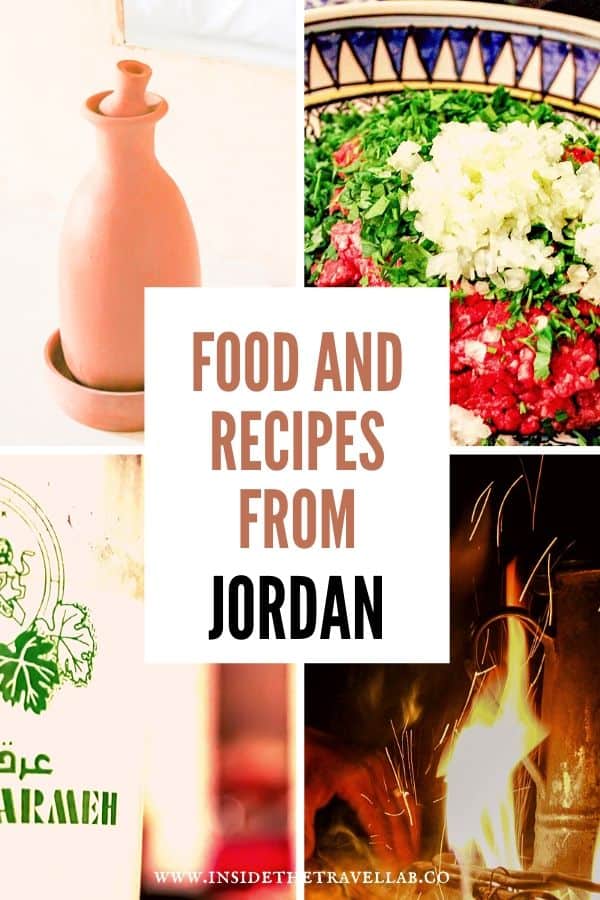
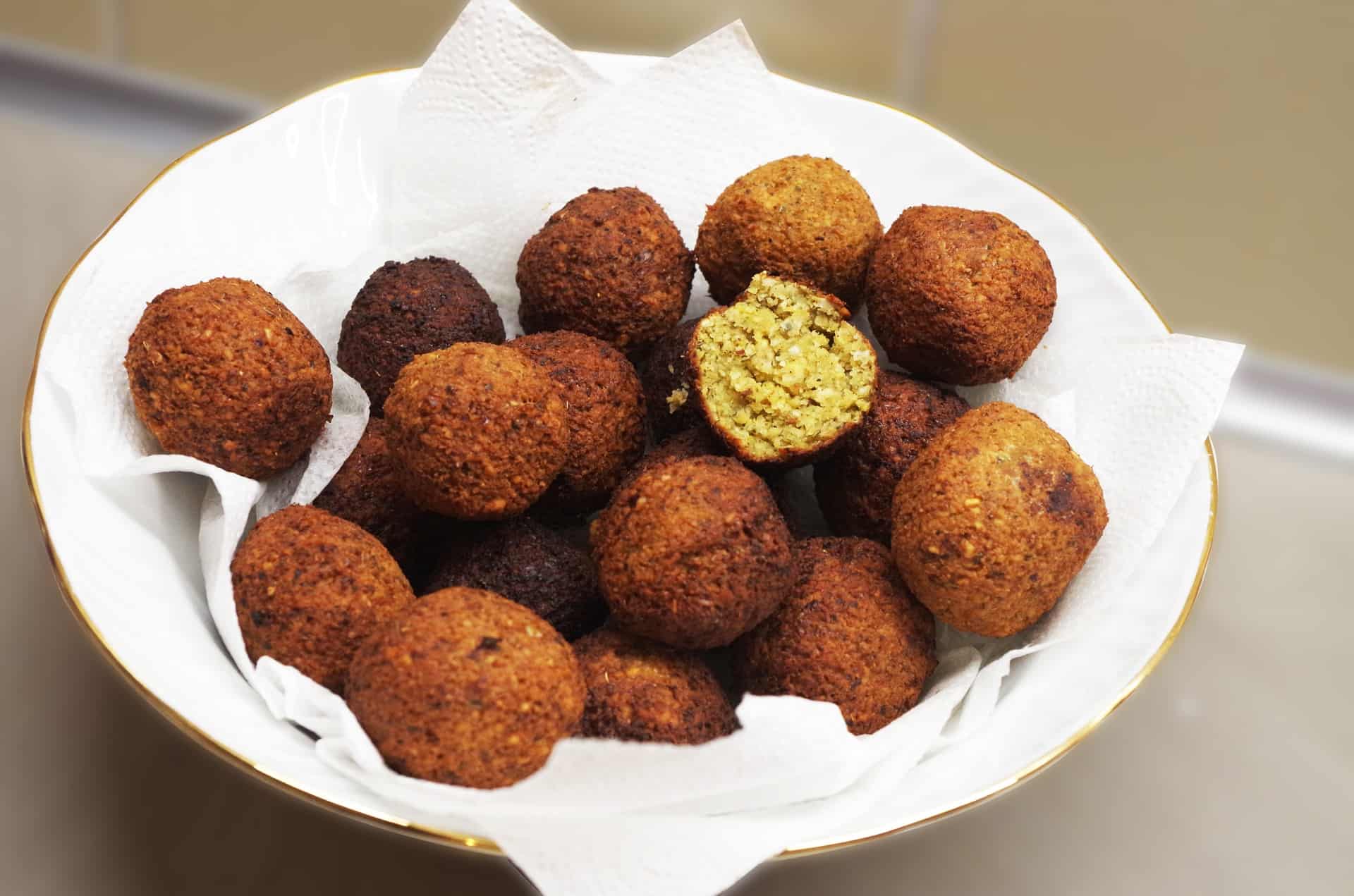
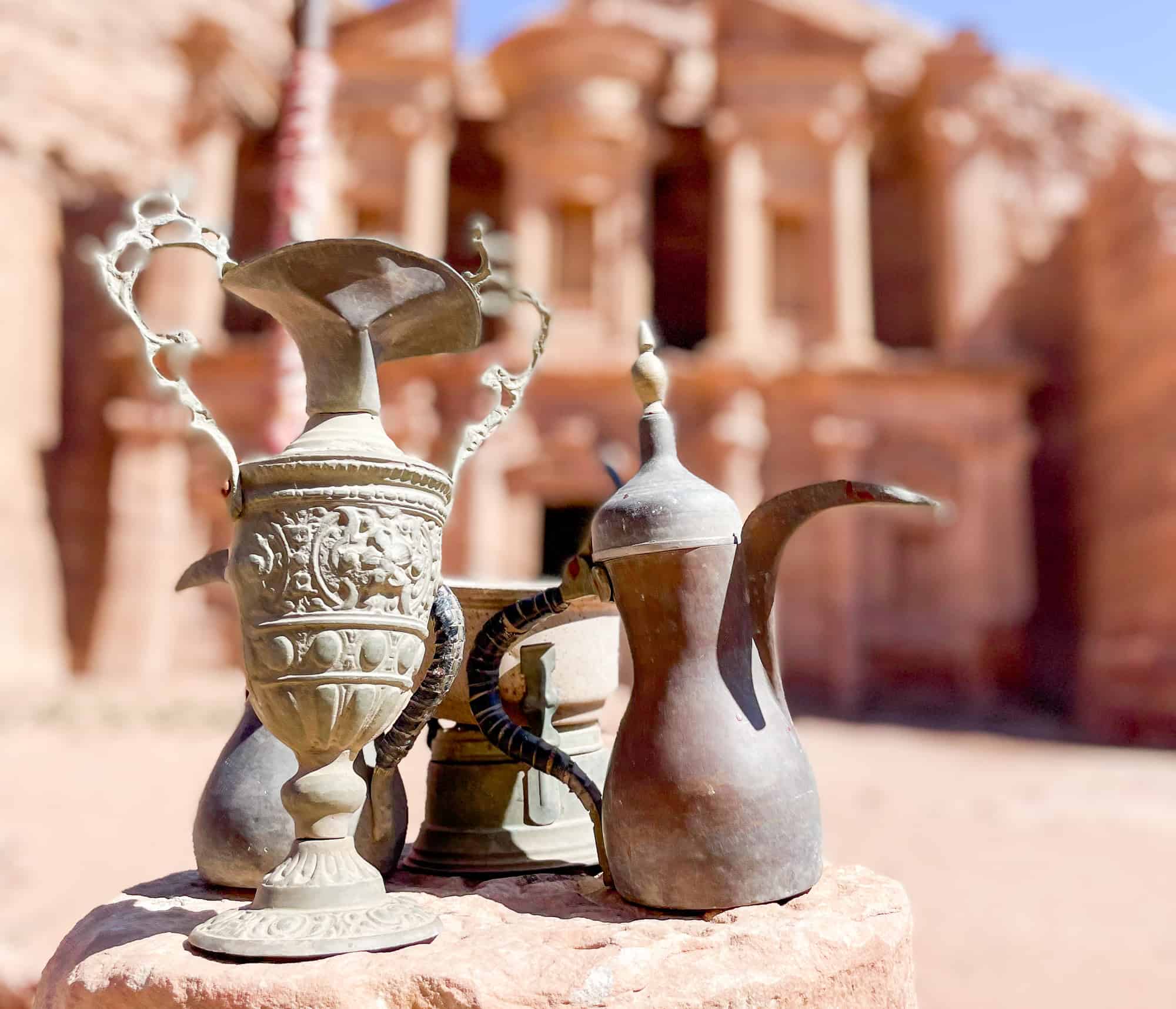
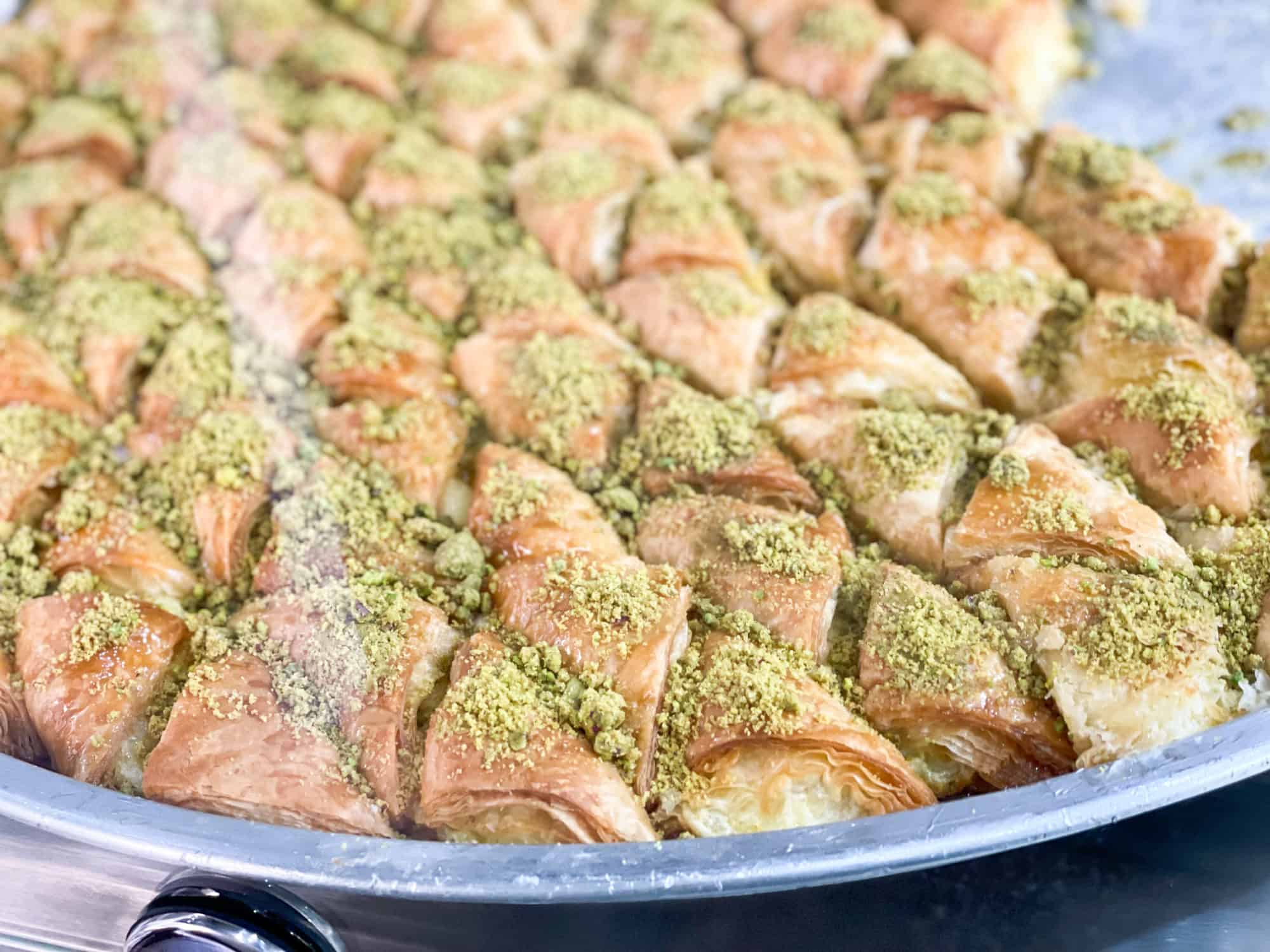

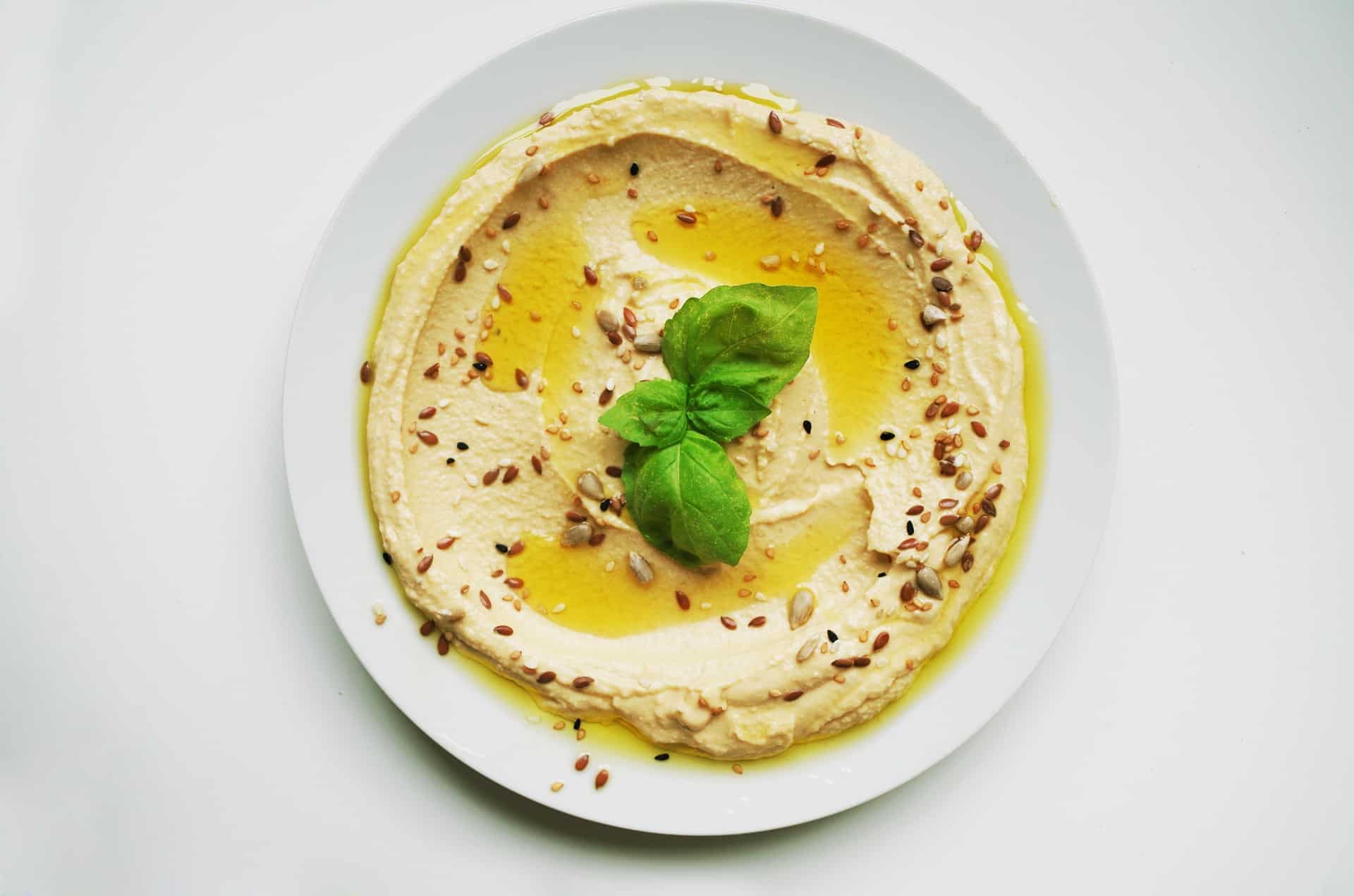


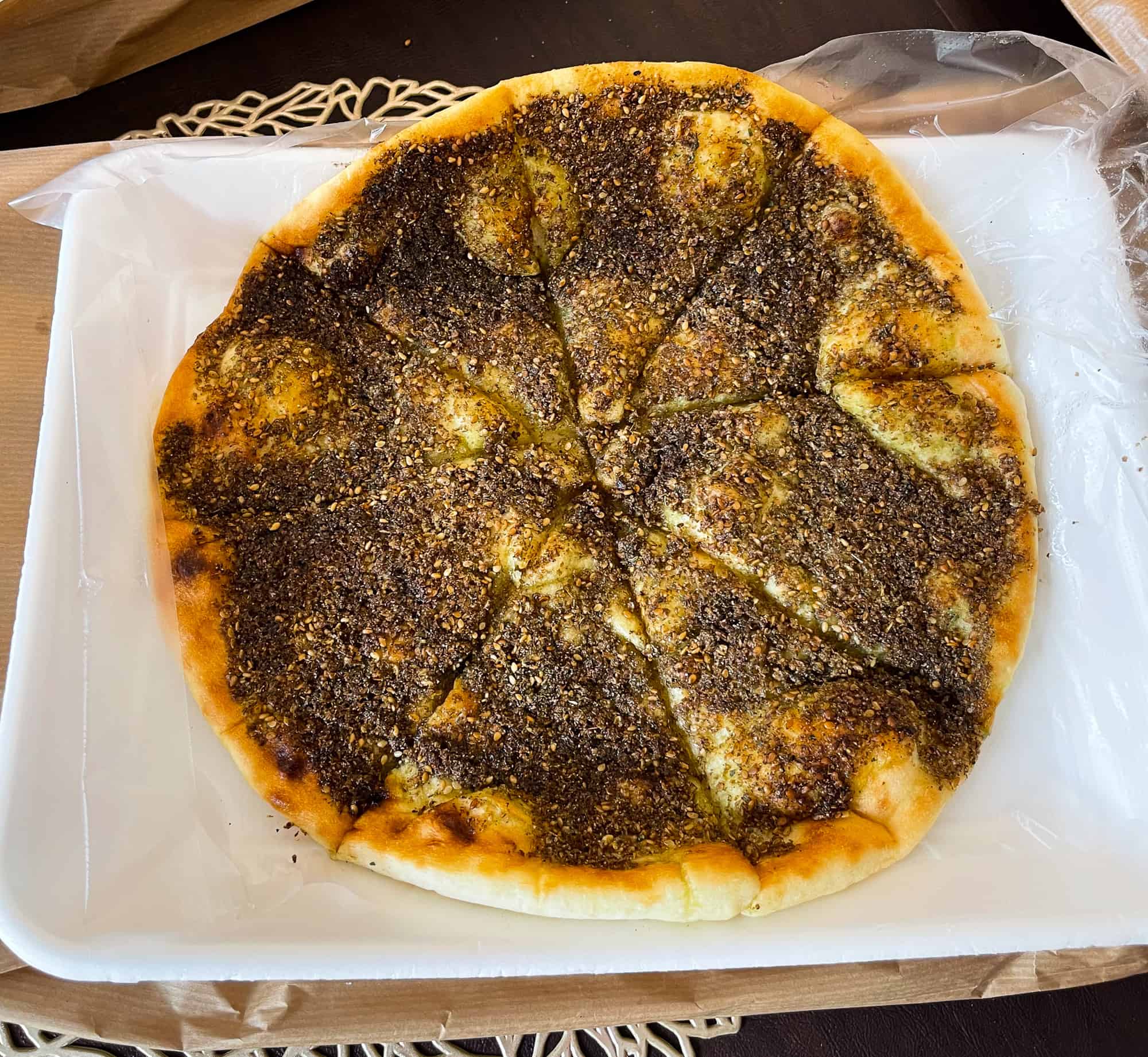
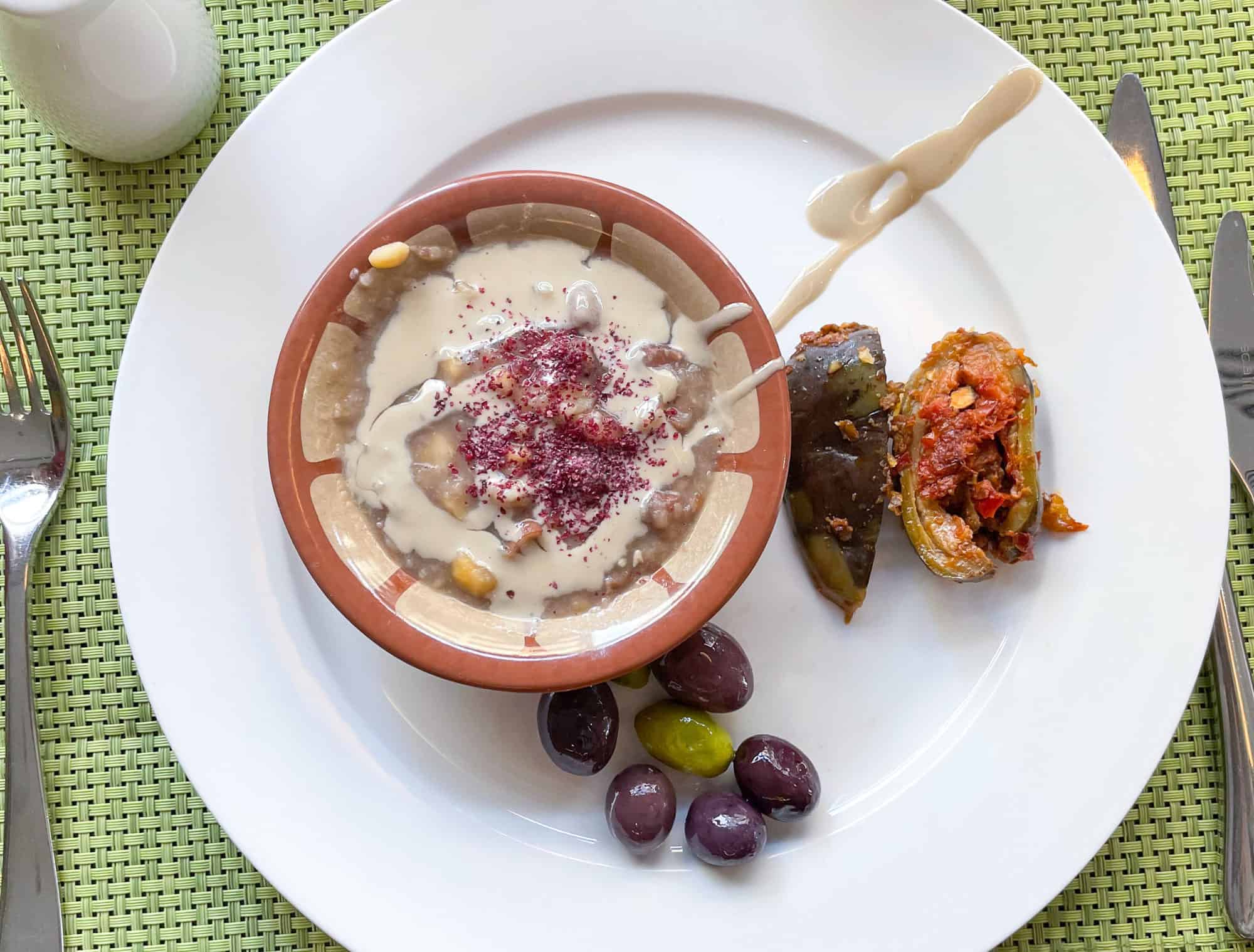
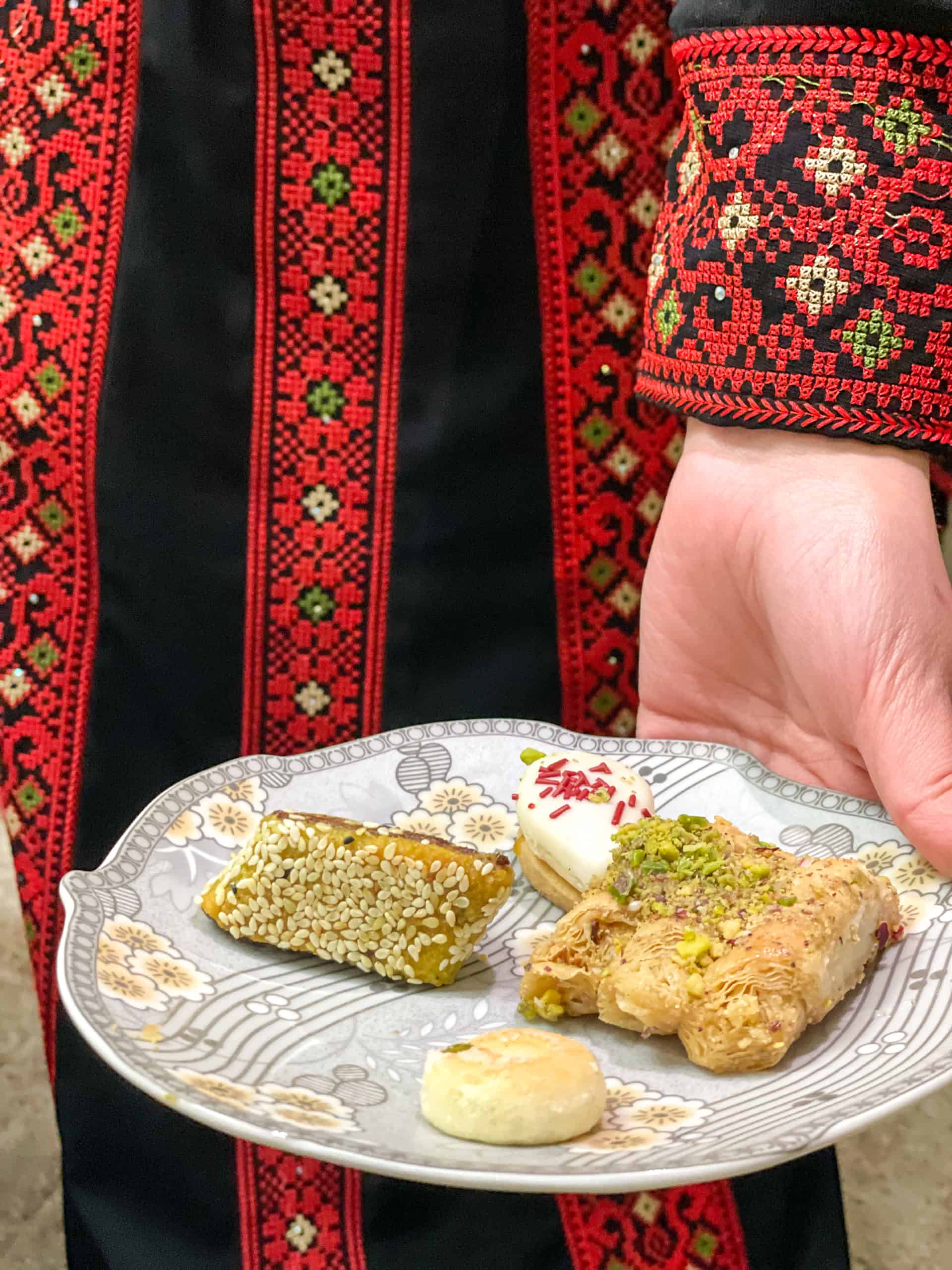
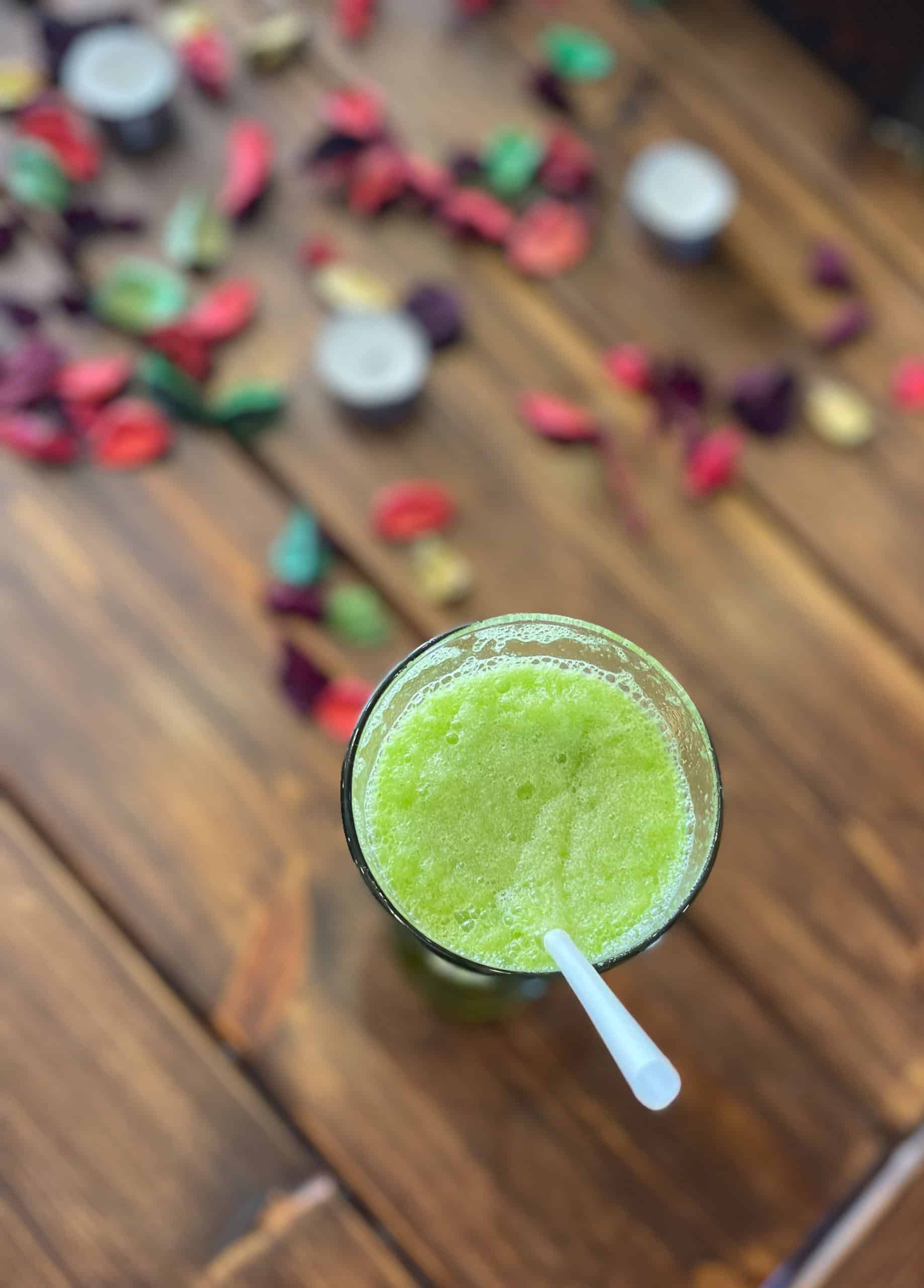
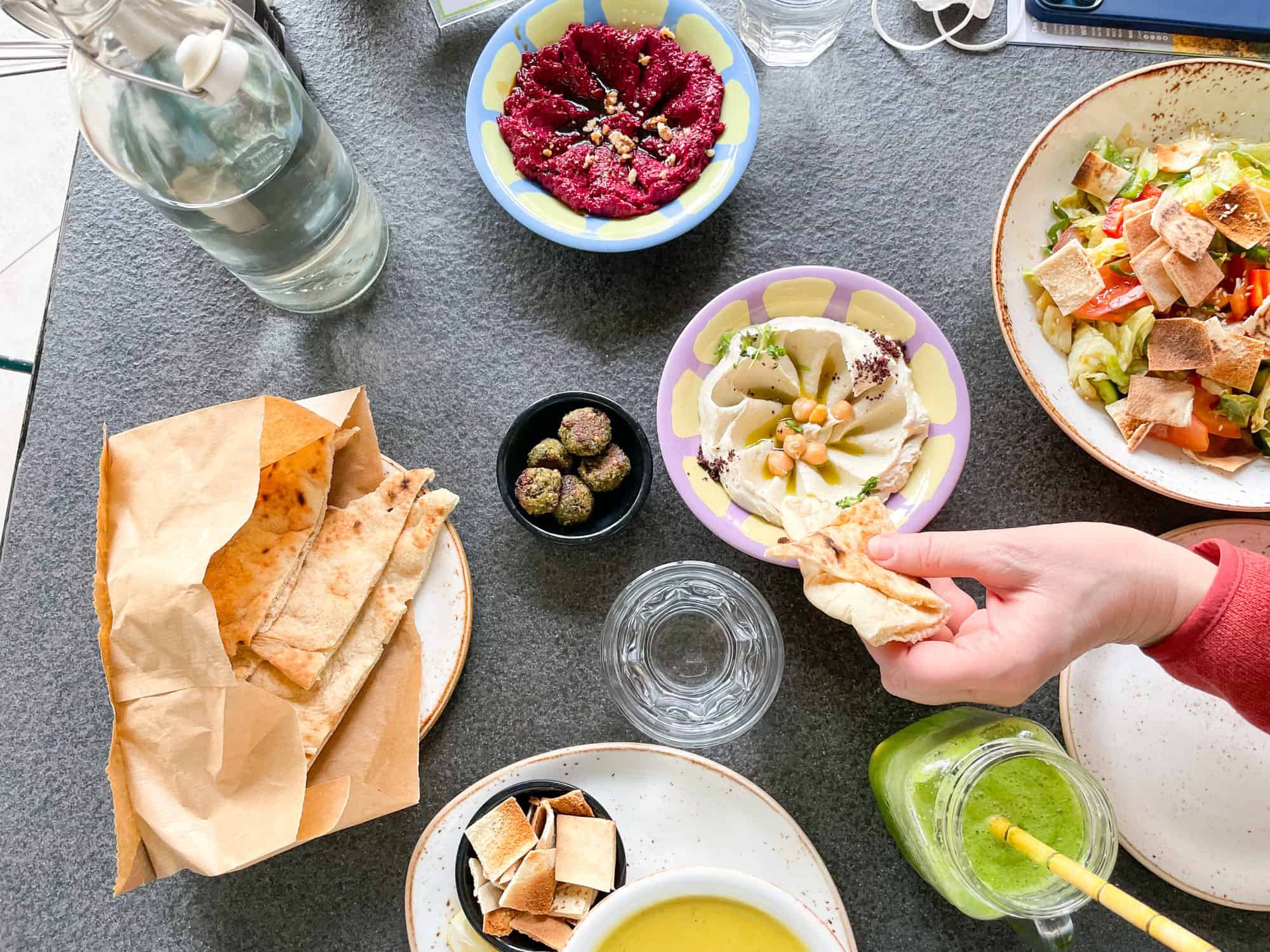
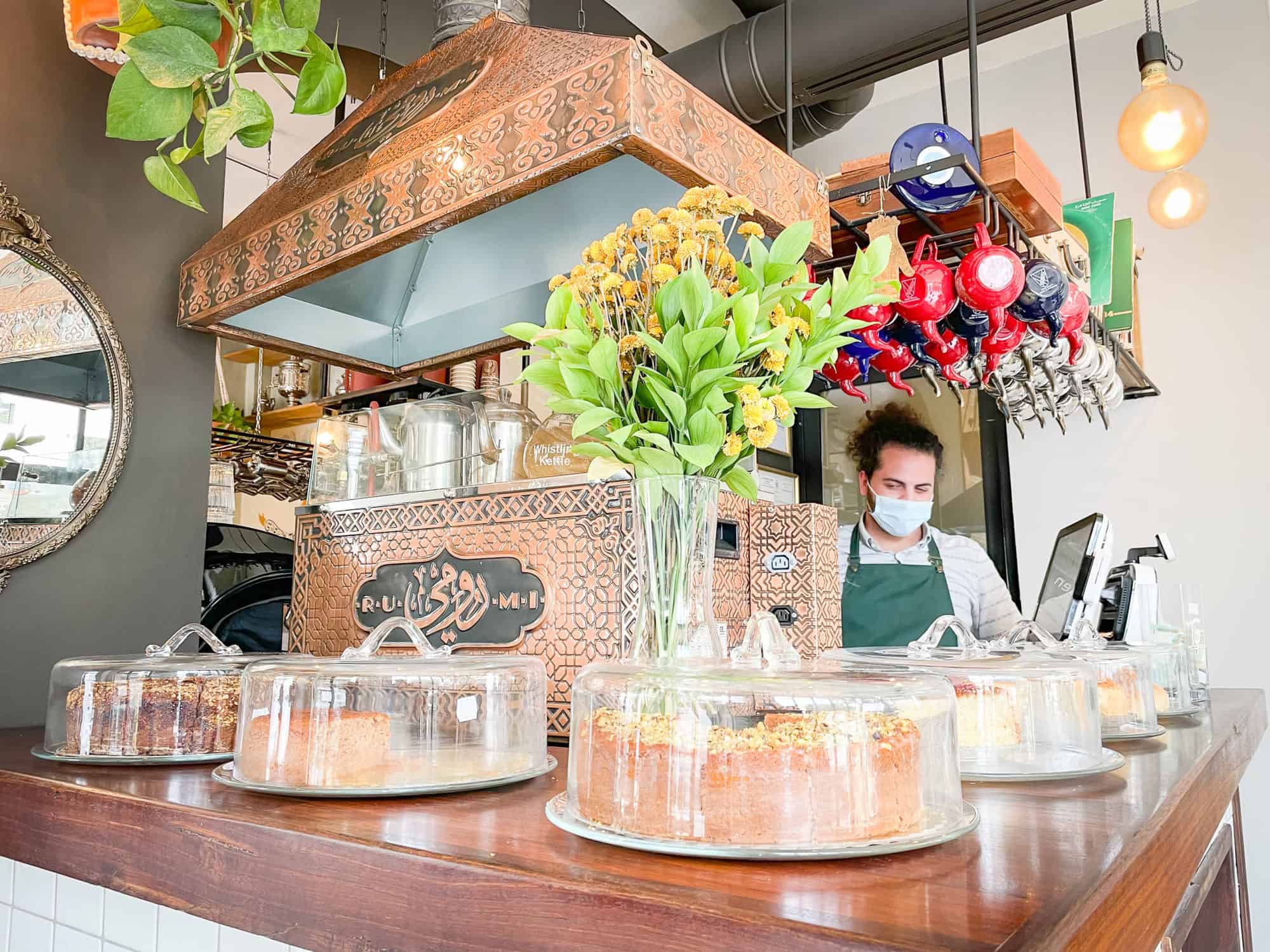

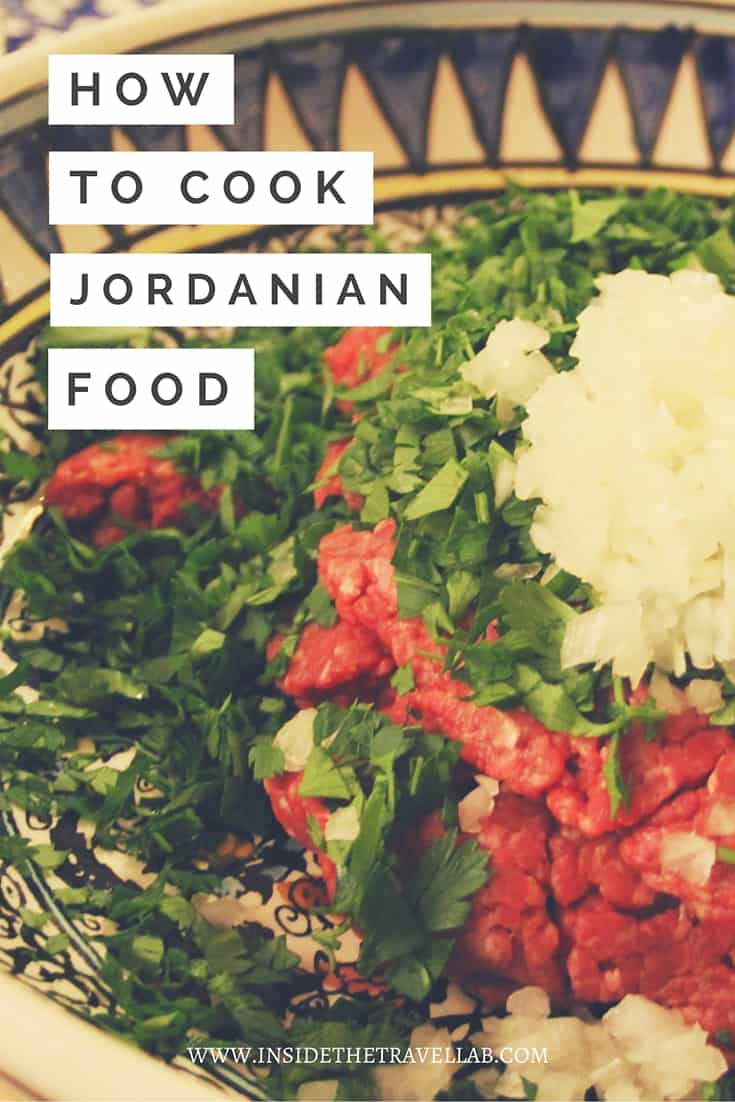



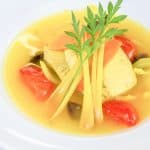
fascinating post.. I like that you capped it off with great photos – It shows me what I know I want to try – to eat anyway. Agree completely about food crossing all language barriers – a bit off topic, but I have always found that watching cooking shows in other languages is one of the best ways to learn a language… you just know what they’re saying.
That’s a good point! Something to remember now I’m back home…
I went here as well and had a great time. Learning to cook is one of my favourite travel activities abroad.
And I’m sure you did a better job of it than I did!
I have never taken a cooking class. I have a very unhealthy fear of knives. And yet … if it was food I really wanted to cook (like this), I think I could overcome!!
Knives, eh? I’ve been to quite a few now but often you can stand back and concentrate on taking photos and making notes. Not with this one! Full steam ahead!